Related Research Articles

The Royal Navy (RN) is the naval warfare force of the United Kingdom, British Overseas Territories and Crown Dependencies, and a component of His Majesty's Naval Service. Although warships were used by English and Scottish kings from the early medieval period, the first major maritime engagements were fought in the Hundred Years' War against France. The modern Royal Navy traces its origins to the early 16th century; the oldest of the UK's armed services, it is consequently known as the Senior Service.

The Royal Australian Navy (RAN) is the naval force of the Australian Defence Force (ADF). The professional head of the RAN is Chief of Navy (CN) Vice Admiral Mark Hammond AM, RAN. CN is also jointly responsible to the Minister of Defence (MINDEF) and the Chief of Defence Force (CDF). The Department of Defence as part of the Australian Public Service administers the ADF. In 2023, the Surface Fleet Review was introduced to outline the future of the Navy.
A midshipman is an officer of the lowest rank in the Royal Navy, United States Navy, and many Commonwealth navies. Commonwealth countries which use the rank include Canada, Australia, Bangladesh, Namibia, New Zealand, South Africa, India, Pakistan, Singapore, Sri Lanka, and Kenya.

The Clearance Diving Branch is the specialist diving unit of the Royal Australian Navy (RAN) whose versatile role covers all spheres of military diving, and includes explosive ordnance disposal and maritime counter-terrorism. The Branch has evolved from traditional maritime diving, and explosive ordnance disposal, to include a special operations focus.

The Royal Naval Reserve (RNR) is one of the two volunteer reserve forces of the Royal Navy in the United Kingdom. Together with the Royal Marines Reserve, they form the Maritime Reserve. The present RNR was formed by merging the original Royal Naval Reserve, created in 1859, and the Royal Naval Volunteer Reserve (RNVR), created in 1903. The Royal Naval Reserve has seen action in World War I, World War II, the Iraq War and the War in Afghanistan.
The United States service academies, also known as United States military academies, are federal academies for the undergraduate education and training of commissioned officers for the United States Armed Forces.
A cadet is a student or trainee within various organisations, primarily in military contexts where individuals undergo training to become commissioned officers. However, several civilian organisations, such as civil aviation groups, maritime organisations, and police services, also designate their trainees as cadets.
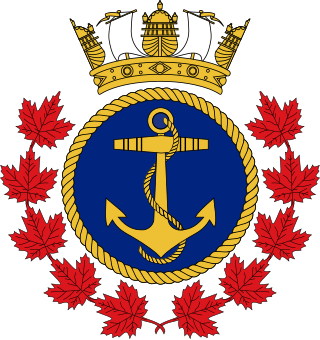
The Royal Canadian Sea Cadets is a Canadian national youth program sponsored by the Canadian Armed Forces and the civilian Navy League of Canada. Administered by the Canadian Forces, the program is funded through the Department of National Defence, with the civilian partner providing support in the local community. Cadets are not members of the Canadian Armed Forces.
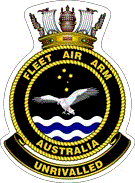
The Fleet Air Arm (FAA), known formerly as the Australian Navy Aviation Group, is the division of the Royal Australian Navy (RAN) responsible for the operation of aircraft. The FAA was founded in 1947 following the purchase of two aircraft carriers from the Royal Navy. FAA personnel fought in the Korean War and the Vietnam War, and participated in later conflicts and operations from host warships.

The Navy League of Canada is a nonprofit organization founded in 1895 and incorporated in 1918. Originally formed to promote maritime issues to Canadians, the Navy League is the non-governmental partner of the Department of National Defence and supports the Royal Canadian Sea Cadets program. The Navy League also independently delivers the Navy League Cadet program for boys and girls between the ages of nine and twelve.
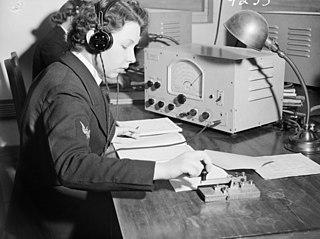
The Women's Royal Australian Naval Service (WRANS) was the women's branch of the Royal Australian Navy (RAN). In 1941, fourteen members of the civilian Women's Emergency Signalling Corps (WESC) were recruited for wireless telegraphy work at the Royal Australian Navy Wireless/Transmitting Station Canberra, as part of a trial to free up men for service aboard ships. Although the RAN and the Australian government were initially reluctant to support the idea, the demand for seagoing personnel imposed by the Pacific War saw the WRANS formally established as a women's auxiliary service in 1942. The surge in recruitment led to the development of an internal officer corps. Over the course of World War II, over 3,000 women served in the WRANS.

The Marine Society is a British charity, the world's first established for seafarers. In 1756, at the beginning of the Seven Years' War against France, Austria, and Saxony Britain urgently needed to recruit men for the navy. Jonas Hanway (1712–1786), who had already made his mark as a traveller, Russia Company merchant, writer and philanthropist, must take the chief credit for founding the society which both contributed to the solution of that particular problem, and has continued for the next two and a half centuries to assist many thousands of young people in preparing for a career at sea.

The Bermuda Sea Cadet Corps was created in 1966 and registered as a charity under the Bermuda Sea Cadet Association Act, 1968. The first unit had actually been created two years earlier.
Sea cadets are members of a cadets youth program sponsored by a national naval service, aimed for young people with an interest in waterborne activities and or the national navy. The organisation may be sponsored in whole or in part by the navy or a naval supporter's organisation.
The Australian Hydrographic Service is the Australian Commonwealth Government agency responsible for providing hydrographic services that meet Australia's obligations under the SOLAS convention and the national interest; enabling safe navigation, maritime trade and supporting protection of the marine environment. The agency, headquartered at the Australian Hydrographic Office in Wollongong, New South Wales, is an element of the Royal Australian Navy (RAN), and serves both military and civilian functions. The names Australian Hydrographic Service and the Australian Hydrographic Office are commonly abbreviated as AHS or AHO respectively.
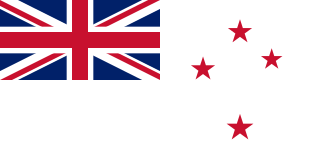
The Royal New Zealand Naval Volunteer Reserve (RNZNVR) is the volunteer reserve force of the Royal New Zealand Navy (RNZN).

The Experimental Military Unit (EMU) was a joint Australian-American company-sized helicopter assault force which operated during the Vietnam War. The unit was created in 1967 following a request from the United States military for Australia to send more helicopter pilots to the conflict. As the only available personnel were from the Royal Australian Navy (RAN) Fleet Air Arm, the RAN Helicopter Flight Vietnam (RANHFV) was formed and integrated into the 135th Assault Helicopter Company of the United States Army. The EMU unit name was selected by the Americans as a backronym for the Australian bird, a choice which amused the Australians: despite being large, fast, and highly mobile, the emu cannot fly.
A corps of cadets, also called cadet corps, is a type of military school intended to prepare cadets for a military life, with the school typically incorporating real military structure and ranks within their respective program.
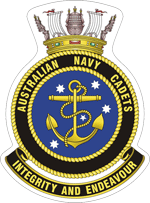
The Australian Navy Cadets (ANC) is a leading youth development organisation supported by the Royal Australian Navy, with a focus on the maritime domain. Cadets participate in numerous exciting and rewarding activities, both on land and the water, with the key objectives of building self-confidence and developing teamwork and leadership skills.

The first involvement Australia had with naval aviation was in 1911, when an Australian-born Royal Navy officer became one of the first four naval officers to receive pilot qualifications. During World War I, the Royal Australian Navy (RAN) experienced several forms of airborne operation, with HMAS Brisbane operating a seaplane, while HMA Ships Sydney and Australia were used for experiments with aircraft launch platforms. An aircraft embarked aboard Sydney was also involved in one of the first naval air battles. Several Australians also flew as part of the Royal Naval Air Service.
References
- Dennis, Peter; Grey, Jeffrey; Morris, Ewan; Prior, Robin (2008). The Oxford Companion to Australian Military History (2nd ed.). South Melbourne: Oxford University Press. ISBN 978-0-19-551784-2. OCLC 271822831.
- Stojanovich, Dan (2011). "The Navy - A Celebrated, Proud and Caring Family". In Oldham, Charles (ed.). 100 Years of the Royal Australian Navy. Bondi Junction: Faircount Media Group. OCLC 741711418 . Retrieved 20 June 2011.